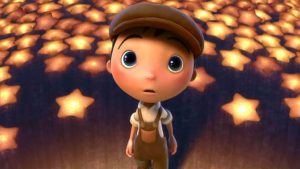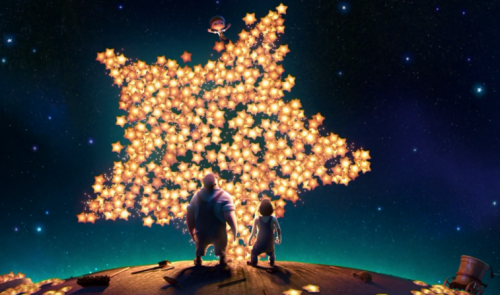"The Moon" – This Short Film Teaches the Importance of Listening to Our Children


Written and verified by the psychologist Valeria Sabater
“The Moon” is a wonderful short film by Pixar that will teach us the value of listening to our children and understanding that every child is worthy and capable of making their way through a world of stars within their reach.
Do not hesitate to share these 5 minutes of animation with the littlest one in your house. What captivates us the most from the very beginning of this short film are the eyes of the protagonist child. His eyes have the shape and brightness of the moon, full of dreams, hope and incredible things to teach his own family.
“The Moon,” a short film about a family with a very special job
We are sure that you too, in your time as a mother or father, have not hesitated to guide your children to learn from everything that surrounds them through your own experience. You teach them to cross the street, to respect nature, to plant a seed, and to notice how the moon orbits around the Earth just like the Earth orbits the sun.

Now… have you stopped to think about everything your child is capable of teaching you? Some people have the mistaken idea that adults “already know everything” and that the mind and brain of a child is only prepared to receive information, not to provide it. That’s a mistake.
The magic and plasticity of free thought that is full of possibilities is something children can give us everyday.
“The Moon” is an exceptional short film that shows us all these little details.
Learn the Family Trade
This short film begins as a very special rite of passage. We meet the child’s family: his father and grandfather who make a quiet boat trip every day to a very specific place. On this occasion, the son accompanies him. At last the moment has come: he too must learn the family trade.
They even offer him an old sailor’s hat, because he is now part of the group. He is part of that small expedition of brave men who see to a special task each day: to sweep the moon free from all the stars that land on it at night.
Everything a child can teach us
At some point, dad and grandpa have a small problem in their task. They find a star so big that they don’t know how to remove it from the surface of the moon. Brooms, the tools that have been used generation upon generation, are now useless.
But our precious boy does not hesitate to climb that star. He is like the Little Prince exploring his own planet, concocting ideas, drawing plans in his mind, which is free and full of possibilities, like any child.
The grandfather and father do not trust that the little one can get them out of their trouble. How can he do it? They are experts and have been carrying out this serious task for decades and decades. However, the child, to the surprise of the adults, succeeds.
- Children often use a type of thinking that sometimes escapes adults. It is called lateral thinking: they see reality in a less rigid way and from perspectives so wide and creative that we can only surrender to the evidence.
- Adults have experience, but we should not lose the magic of our inner child, capable of intuiting reality from a broader point of view, full of possibilities.
- Children have a lot to teach us, because they are a new generation and because childhood is not about a lack of skills, but a chest full of possibilities that parents should favor by trusting and listening.
Children will always use life to create a much better world, provided that we are able to create the right environment and, above all, to respect and enhance all their dreams, abilities and talents, whatever they may be.
Each child is unique and exceptional. They all carry their own moon in their eyes, and from there, the need for us to listen to them and trust them so they can reach the stars that life hides for each of them. Don’t hesitate to enjoy this wonderful Pixar short “The Moon” with your children.
All cited sources were thoroughly reviewed by our team to ensure their quality, reliability, currency, and validity. The bibliography of this article was considered reliable and of academic or scientific accuracy.
- Albornoz, N., Silva, N., & López, M. (2015). Escuchando a los niños: Significados sobre aprendizaje y participación como ejes centrales de los procesos de inclusión educativa en un estudio en escuelas públicas en Chile. Estudios Pedagógicos (Valdivia), 41(ESPECIAL), 81-96. https://scielo.conicyt.cl/scielo.php?pid=S0718-07052015000300006&script=sci_arttext
- Rinaldi, C. (2006). La pedagogía de la escucha: La perspectiva de la escucha desde Reggio Emilia. Una mirada reflexiva hacia la cultura de la infancia. Bogotá. http://www.bama.org.ar/sites/default/files/_archivos/merkaz/Jomer_on_line/rh_pedagogia_escucha.pdf
- Beuchat, C. (1989). Escuchar: el punto de partida. Lectura y vida. Revista latinoamericana de lectura, 3, 20-25. http://www.lecturayvida.fahce.unlp.edu.ar/numeros/a10n3/10_03_Beuchat.pdf
This text is provided for informational purposes only and does not replace consultation with a professional. If in doubt, consult your specialist.








